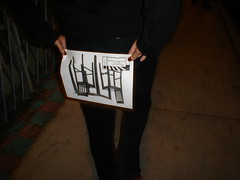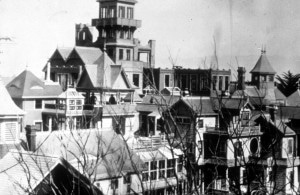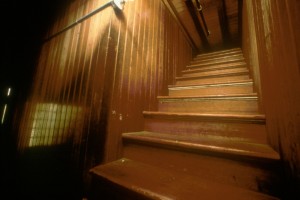Personally, I think there’s a wide spectrum when it comes to whether or not you outline before you write. Yes, okay, having an outline or not having an outline is pretty cut-and-dried, but there are a lot of in betweens:
- An idea for an opening
- An idea for a beginning and a middle
- An idea for a beginning, a middle and an end (a mental outline, perhaps?)
- Ideas for several major guideposts in the story (written down?), with room to figure out how to move between them
- A written outline of the major guideposts and all the transitions between them.
- A chapter-by-chapter synopsis of the story.
- A scene-by-scene spreadsheet, possibly including dialogue, setting, exposition.
 Once upon a time, I was at the pantser (as in “by the seat of your pants”) end of the spectrum. And my stories were often a mess. (Winchester Mystery Story, anyone?) Whether or not they’d turn out all right was hit-or-miss.
Once upon a time, I was at the pantser (as in “by the seat of your pants”) end of the spectrum. And my stories were often a mess. (Winchester Mystery Story, anyone?) Whether or not they’d turn out all right was hit-or-miss.
Then I got into a larger project: parallel novels written simultaneously with a friend. We had to work to coordinate our timelines. There was no way to pants this without ruining one another’s books. I broke down and plotted. And to my surprise, it was even better than pantsing!
But while I’m definitely a plotting convert, I’m not a hard-core-plan-every-scene-to-the-final-detail kind of writer. Like pantsers (and probably most plotters to some extent), I need at least a little discovery and creativity to make drafting fun for me. I’m still experimenting at how much discovery vs. planning I need—my last draft was a little short on the planning. It wasn’t until I sat down and figured out my path in a little more detail that I could finish the book. (And I’m going to need to add some more structure in some parts—that darn sagging middle!)
So where do you fall? How did you come to be a plotter or pantser?
Photo by fracacta





